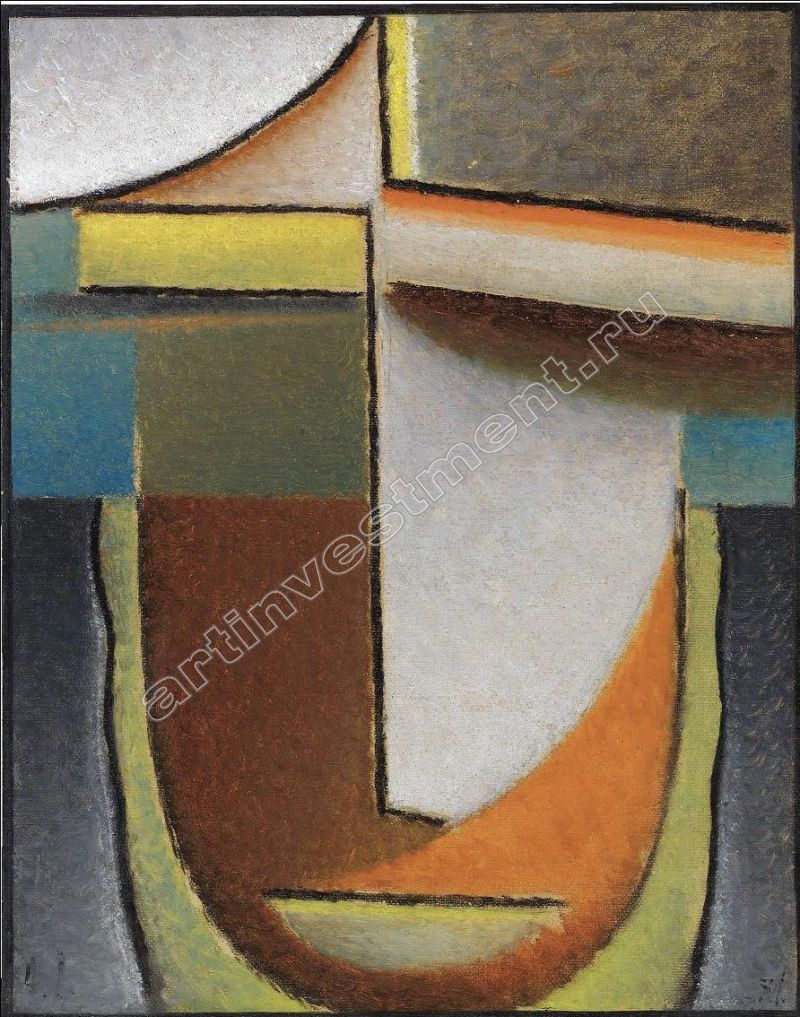Art Investment
Artist: Jawlensky Alexey Georgievich
Sales history available to subscribers
About work
Year1931
CategoryPainting
ProvenanceOtto Ritschl, WiesbadenGalerie Beyeler, BaselSidney Janis Gallery, New York (acquired by 1959 and until circa 1969)Private CollectionSale: Hauswedell & Nolte, Hamburg, 8th & 9th June 1979, lot 542EXHIBITEDNew York, Sidney Janis Gallery, Alexej von Jawlensky, 1957, no. 42Pasadena, Pasadena Museum; Waltham, Rose Art Museum, Brandeis University; Winnipeg, Winnipeg Art Gallery; Berkeley, University Art Gallery, University of California; Albuquerque, University Art Gallery, University of New Mexico & New Orleans, Isaac Delgado Museum of Art, Alexej Jawlensky: A Centennial Exhibition, 1964-66, no. 170New York, Sidney Janis Gallery, Two Generations: Picasso to Pollock, 1966LITERATURE AND REFERENCESThe artist's 'Cahier Noir', listed p. 12Clemens Weiler, Alexej Jawlensky, Cologne, 1959, no. 351, illustrated p. 252 Maria Jawlensky, Lucia Pieroni-Jawlensky & Angelica Jawlensky, Alexej von Jawlensky. Catalogue Raisonnй of the Oil Paintings, 1914-1933, London, 1992, vol. II, no. 1360, illustrated p. 460CATALOGUE NOTEJawlensky's њuvre is dominated by several series of paintings on the theme of the human face, throughout which his treatment of the features becomes increasingly stylised and abstracted. The present work, Abstrakter Kopf: Greco Erlebnis, belongs to a series of 'Abstract Heads', characterised by a grid of predominantly horizontal and vertical lines and brightly painted blocks of pigment. The typically elongated, U-shaped face with a strong symmetrical structure was first conceived in 1918, and Jawlensky worked on this series until 1935. A growing interest in Indian philosophy and the lives of Indian yogis appear to have a strong influence on the series, as suggested by the meditative closed eyes and the overall reduction of the composition to the purest pictorial elements of colour and line. Focusing on the formal elements in this series, the painter arrived at a style through which he was able to convey a sense of harmony and universal spirituality.
Size, cm*42,5×33
Risk indicator
Attention! All materials of the site and database of auction results ARTinvestment.RU, including illustrated reference information about the works sold at auctions, are intended for use exclusively for informational, scientific, educational and cultural purposes in accordance with Art. 1274 of the Civil Code. Use for commercial purposes or in violation of the rules established by the Civil Code of the Russian Federation is not allowed. ARTinvestment.RU is not responsible for the content of materials submitted by third parties. In case of violation of the rights of third parties, the site administration reserves the right to remove them from the site and from the database on the basis of an application from an authorized body.


